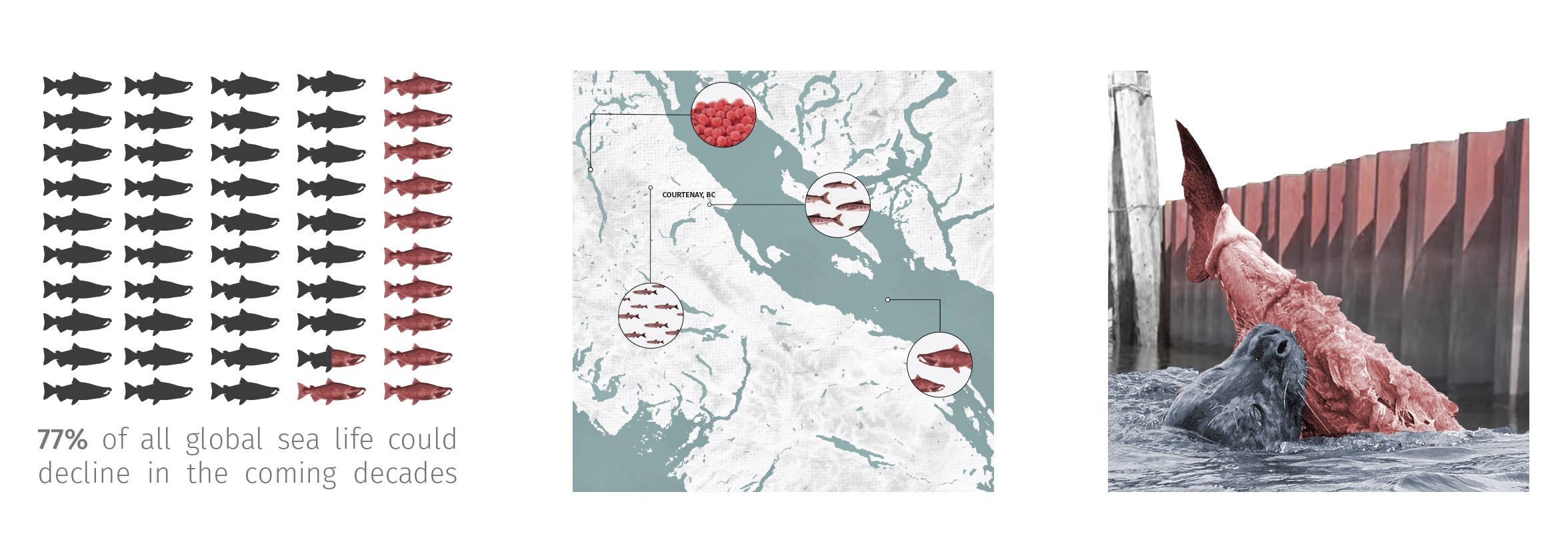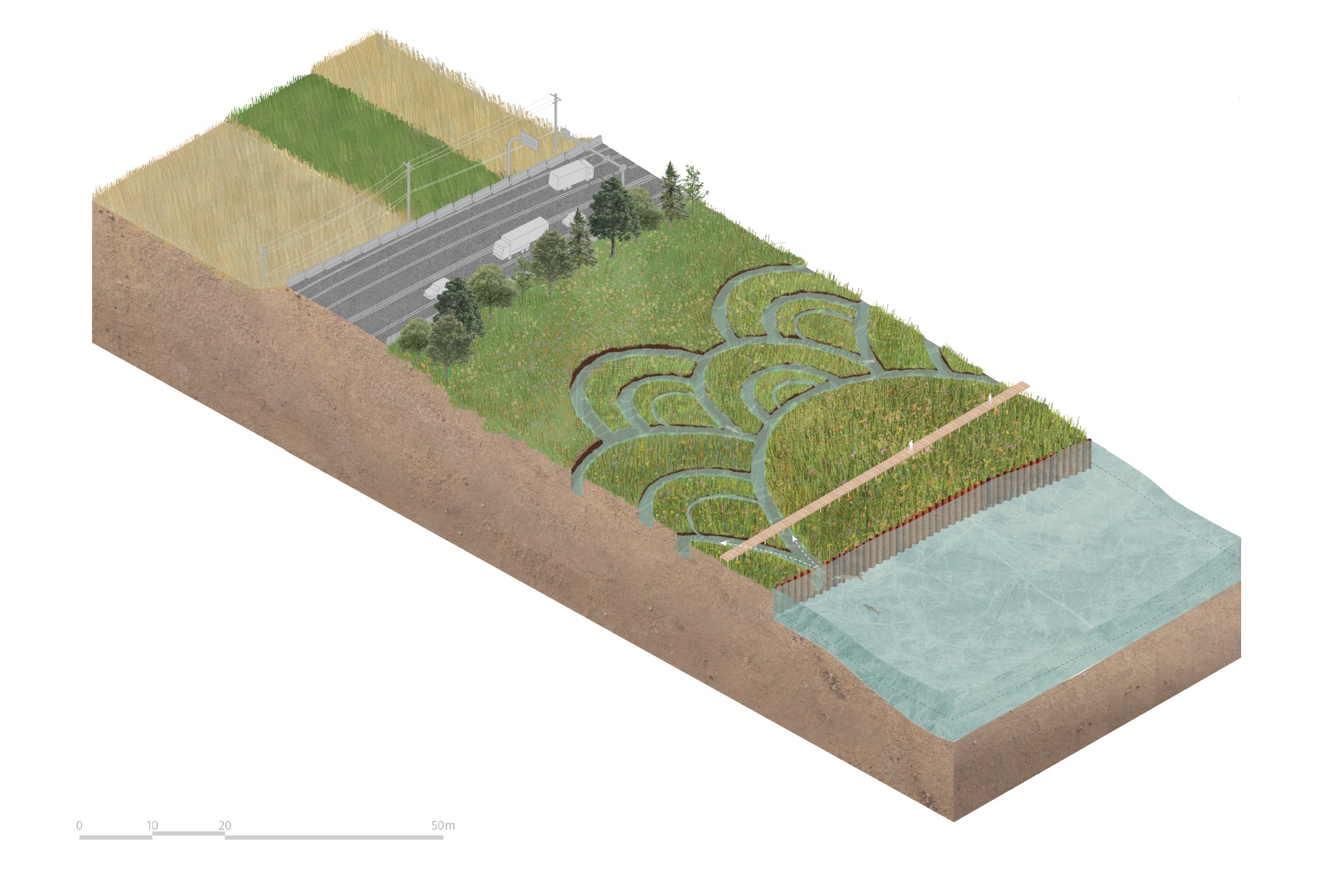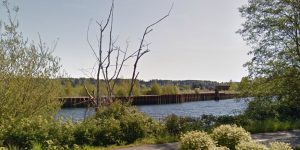
In 2006, the Vancouver-based Interfor Corporation, one of the largest lumber producers in the world, demolished a mill on the Courtenay River in Vancouver Island’s Comox Valley. It was the Field family that originally built the mill in 1949 that was later bought and sold several times before being acquired by Interfor in 2001. For many of its years in operation, this mill processed yellow cedar, a tree that commonly grows over a thousand years old. Capitalizing on the time these trees had spent growing, much of the processed lumber was sold overseas to markets in the United States of America and Japan. Interfordecided to close the mill after owning it for only three years, citing the availability of nature on the market found more cheaply elsewhere. Ultimately, Interforsold the site for an estimated $6.5 million.
This site is marginal then, not because it has no economic value, but because it was discarded from a capitalist economy that constantly searches for more and cheaper resources. Existing in an interconnected global economy, this mill has been made redundant by others in Europe and China. Whereas locally, Vancouver Island’s forests are now processed more efficiently at other sites. As new sites of exploitation are brought into the market, those consumed are left behind, often with a toxic legacy.
Immediately visible on-site is a steel retaining wall that holds contaminated soils separate from the river. Furthermore, paving covers nearly all of the site’s surface. Both features suggest a logic of containment and control. Next to the fluctuating tidal river waters, the site appears inert. However, we know better. The adjacent Hollyhock Marsh evidences the history of this land as a dynamic habitat. Though change may be happening more slowly, the former mill site still contains traces of its past connection to the water. While old-growth trees embody continuity with the past, a destructive severance in time marks this site.
With this in mind, our design challenge was to envision an alternative future for the site using landforms and local species considerations to create an encounter for site guests.
In our research, we came to find out that the steel reinforcing wall that remained on the site allowed sea lions to easily feast on the vulnerable smolting salmon population. The smolting phase is one of the final phases in a salmon's life cycle before it heads out into the ocean to mature into an adult. With the wall in place, salmon have nowhere to escape their predator on their way out to see. This is majorily contributing to the decimation of the salmon population in the area.

Our project focused on creating a series of holes in the wall, creating trench habitats to protect a variety of vulnerable species including the salmon that routinely travel through the estuary site.

ISO SITE PLAN:



Learning Significance